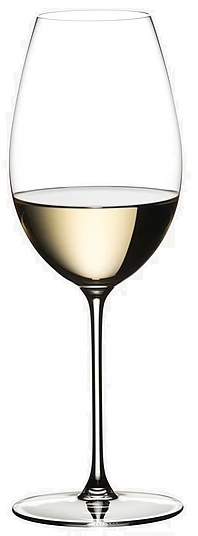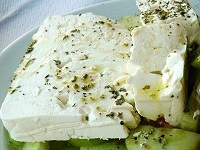Albana Secco (Italy)
Romagna Albana Secco is a dry white wine from Emilia Romagna.
The Albana grape grows in the area between Ravenna and Rimini.
Albana Secco Flavors
Albana wines are unique in their floral aromas and mineral characteristics. Citrus, Peach, Apricot, and Pineapple are typical flavors, with Acacia flowers in the nose.
Lemon |
Grapefruit |
Peach |
Pear |
Apricot |
Pineapple |
Acacia |
Flint |
Albana Secco Profile
Albana is known to be aromatic, but light in body, and crisp in acidity:
| SUGAR: | Dry (3 g/l) |
| BODY: | Light |
| FRUIT: | Medium |
| ACIDITY: | Medium - High |
| ALCOHOL: | 12-13% ABV |
| Serving temperature: 8-10°C (46-50°F) | |
Albana Secco Food Pairing
Albana pairs best with Seafood and Fried Fish.
The best Albana DOCGs can have enough body to match white meat.
Aperitif |
Fish |
Seafood |
Sushi |
Pasta |
Risotto |
Salads |
Soft Cheese |
Excellent Pairings
Seafood. Raw Fish. Sushi.
Grilled or Fried White Fish. Sea Bass.
Seafood Pasta and Seafood Risotto.
Vinegar Salad. Caprese Salad.
Italian. Indian. Asian Dishes.
Italian Specialities
Baccalà.
Lamb with Peas.
The Ideal Glass for Albana Secco

|
The Sauvignon Blanc glass is smaller than a Chardonnay glass.
It has a more narrow bowl to concentrate the crisp and citrusy aromas of a zesty and fruity white wine. |
Albana Secco Cheese Pairing
Albana Secco is known for its crisp and fruity profile. It pairs well with a variety of cheeses.
Opt for cheeses with moderate saltiness and creaminess to balance the wine's acidity. You can also add accompaniments like fresh fruits (grapes, apples, pears), nuts (almonds, walnuts), and a light drizzle of honey to enhance the pairing.
Fresh and Mild Cheeses
Mozzarella: Its delicate flavor pairs well with the wine's lightness.
Ricotta: Especially good if served with a drizzle of honey or fresh fruits.
Goat Cheese (Chèvre): The tanginess complements the subtle fruit notes in Albana Secco.
Semi-Soft Cheeses
Fontina: Its nutty, buttery qualities make a good match.
Brie: The creamy texture and mild flavor work beautifully with Albana Secco.
Camembert: Similar to Brie but with slightly more earthiness.
Hard Cheeses
Asiago: Lightly aged Asiago adds a complementary tang to the wine.
Manchego: A classic Spanish pairing, especially younger Manchego, which is less intense.
Gruyère: Mildly nutty and sweet, enhancing the wine's subtlety.
Blue Cheeses (for contrast)
Robiola: Its mild creaminess contrasts nicely without overpowering the wine.
If You Like Albana Secco
You May Also Like:
Romagna Albana DOCG
The Albana grape grows mainly in Emilia-Romagna.
The grape's origin from the Colli Albani area dates back to Roman times.
Albana di Romagna got the DOC status (Denominazione Origine Controllata e Garantita) in 1967, DOCG in 1987, and changed the name to Romagna Albana in 2011.
The DOCG status covers 5 types of wine:
| Name | Alcohol | Sugar |
| Bianco Secco | 12.0% | 3 g/l |
| Bianco Amabile | 12.5% | 30 g/l |
| Bianco Dolce | 13.0% | 70 g/l |
| Passito | 17.0% | 300 g/l |
| Passito Riserva | 24.0% | 350 g/l |
Region Emilia Romagna

Climate
Emilia Romagna enjoys has a mild continental climate: Wet winters and dry summers.
The most important landmark is the River Po. It is responsible for cooling breezes that are vital in the flat terrain.
Unlike Toscana and Piemonte, the wine growers cannot rely on elevation and the moderating effects of diurnal temperatures.
One exception is the hills around Bologna with the sandstone and limestone terroirs of the Colli Bolognesi, with some very high-quality wine production.
Soil
The plains around the Po Valley are known for their fertile alluvial soils, ideal for growing grapes. The area is particularly well-suited for producing sparkling wines like Lambrusco.
The hills of the Apennines has a mix of clay, sand, and limestone soils, providing excellent drainage and mineral content, ideal for producing high-quality wines.
Black Grapes |
White Grapes |

20% Lambrusco |

|
Red Wines |
White Wines |

|

|
Denominations
Colli Bolognesi Pignoletto DOCG
Romagna Albana DOCG
Bosco Eliceo DOC
Colli Bolognesi DOC
Colli d’Imola DOC
Colli di Faenza DOC
Colli di Parma DOC
Colli di Rimini DOC
Colli di Scandiano e di Canossa DOC
Colli Piacentini DOC
Colli Romagna Centrale DOC
Emilia-Romagna DOC
Gutturnio DOC
Lambrusco di Sorbara DOC
Lambrusco Grasparossa di Castelvetro DOC
Lambrusco Salamino di Santa Croce DOC
Modena DOC
Ortrugo dei Colli Piacentini DOC
Reggiano DOC
Reno DOC
Romagna DOC












